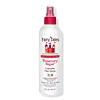What's inside
What's inside
 Key Ingredients
Key Ingredients

 Benefits
Benefits

 Concerns
Concerns

 Ingredients Side-by-side
Ingredients Side-by-side

Sd Alcohol 40-B
AstringentWater
Skin ConditioningOctylacrylamide/Acrylates/Butylaminoethyl Methacrylate Copolymer
Aloe Barbadensis Leaf Juice
Skin ConditioningAminomethyl Propanol
BufferingChamomilla Recutita Flower Extract
MaskingCinnamomum Zeylanicum Bark Oil
MaskingCocamidopropyl Betaine
CleansingCymbopogon Nardus Oil
MaskingParfum
MaskingGeranium Maculatum Extract
TonicGlycerin
HumectantMelaleuca Alternifolia Leaf Oil
AntioxidantPimpinella Anisum Seed Oil
MaskingRosmarinus Officinalis Leaf Oil
MaskingSalvia Officinalis Leaf Extract
CleansingTriethyl Citrate
MaskingSd Alcohol 40-B, Water, Octylacrylamide/Acrylates/Butylaminoethyl Methacrylate Copolymer, Aloe Barbadensis Leaf Juice, Aminomethyl Propanol, Chamomilla Recutita Flower Extract, Cinnamomum Zeylanicum Bark Oil, Cocamidopropyl Betaine, Cymbopogon Nardus Oil, Parfum, Geranium Maculatum Extract, Glycerin, Melaleuca Alternifolia Leaf Oil, Pimpinella Anisum Seed Oil, Rosmarinus Officinalis Leaf Oil, Salvia Officinalis Leaf Extract, Triethyl Citrate
Water
Skin ConditioningPropylene Glycol
HumectantPEG-40 Hydrogenated Castor Oil
Emulsifying1,2-Hexanediol
Skin ConditioningSaccharomyces/Rice Ferment Filtrate
Skin ConditioningCaffeine
Skin ConditioningRosmarinus Officinalis Flower/Leaf/Stem Water
MaskingBiotin
AntiseborrhoeicSerenoa Serrulata Fruit Extract
Skin ConditioningPanthenol
Skin ConditioningPantothenic Acid
Skin ConditioningTocopheryl Acetate
AntioxidantRetinyl Palmitate
Skin ConditioningAscorbyl Palmitate
AntioxidantPhospholipids
Skin ConditioningButylene Glycol
HumectantHydroxyacetophenone
AntioxidantAllantoin
Skin ConditioningCitrus Aurantium Dulcis Peel Oil Expressed
PerfumingEucalyptus Globulus Leaf Oil
PerfumingMelaleuca Alternifolia Leaf Oil
AntioxidantArginine
MaskingRosmarinus Officinalis Leaf Oil
MaskingCaprylhydroxamic Acid
Pentylene Glycol
Skin ConditioningGlycerin
HumectantLactobacillus Ferment
Skin ConditioningDextran
Ethylhexylglycerin
Skin ConditioningPotassium Sorbate
PreservativeAcetyl Tetrapeptide-3
Skin ProtectingTrifolium Pratense Flower Extract
AstringentLeuconostoc/Radish Root Ferment Filtrate
AntimicrobialSorbic Acid
PreservativeWater, Propylene Glycol, PEG-40 Hydrogenated Castor Oil, 1,2-Hexanediol, Saccharomyces/Rice Ferment Filtrate, Caffeine, Rosmarinus Officinalis Flower/Leaf/Stem Water, Biotin, Serenoa Serrulata Fruit Extract, Panthenol, Pantothenic Acid, Tocopheryl Acetate, Retinyl Palmitate, Ascorbyl Palmitate, Phospholipids, Butylene Glycol, Hydroxyacetophenone, Allantoin, Citrus Aurantium Dulcis Peel Oil Expressed, Eucalyptus Globulus Leaf Oil, Melaleuca Alternifolia Leaf Oil, Arginine, Rosmarinus Officinalis Leaf Oil, Caprylhydroxamic Acid, Pentylene Glycol, Glycerin, Lactobacillus Ferment, Dextran, Ethylhexylglycerin, Potassium Sorbate, Acetyl Tetrapeptide-3, Trifolium Pratense Flower Extract, Leuconostoc/Radish Root Ferment Filtrate, Sorbic Acid
Alternatives
Ingredients Explained
These ingredients are found in both products.
Ingredients higher up in an ingredient list are typically present in a larger amount.
Glycerin is already naturally found in your skin. It helps moisturize and protect your skin.
A study from 2016 found glycerin to be more effective as a humectant than AHAs and hyaluronic acid.
As a humectant, it helps the skin stay hydrated by pulling moisture to your skin. The low molecular weight of glycerin allows it to pull moisture into the deeper layers of your skin.
Hydrated skin improves your skin barrier; Your skin barrier helps protect against irritants and bacteria.
Glycerin has also been found to have antimicrobial and antiviral properties. Due to these properties, glycerin is often used in wound and burn treatments.
In cosmetics, glycerin is usually derived from plants such as soybean or palm. However, it can also be sourced from animals, such as tallow or animal fat.
This ingredient is organic, colorless, odorless, and non-toxic.
Glycerin is the name for this ingredient in American English. British English uses Glycerol/Glycerine.
Learn more about GlycerinThis tea tree oil comes from the leaves of the Tea Tree plant. Tea tree oil has antioxidant, anti-inflammatory, and antimicrobial properties.
According to the book Journal of Profiles of Drug Substances, tea tree helps in reducing acne-causing bacteria such as Propionibacterium acnes. This is due to the Terpinen components of tea tree oil.
Tea tree may cause sensitivity and irritation for some people. This oil naturally contains fragrance such as linalool and limonene.
However, research shows irritation usually occurs when using pure tea tree oil and not in cosmetic products.
Tea tree oil was found to help relieve the symptoms of psoriasis in one study.
Tea tree oil is toxic when ingested. Another study showed it to caused damage to the nervous system of dogs and cats when applied to their skin or given orally.
Learn more about Melaleuca Alternifolia Leaf OilRosmarinus Officinalis Leaf Oil is oil expressed from the leaves of the rosemary plant.
Rosemary Leaf Oil is a fragrance and helps give your product a scent. If you are sensitive to irritating fragrances, this one contains camphor. Camphor has been found to irritate skin.
This oil also contains antioxidant and antimicrobial properties. As an antioxidant, it may protect you skin against damage. This can help slow down the signs of aging.
Learn more about Rosmarinus Officinalis Leaf OilWater. It's the most common cosmetic ingredient of all. You'll usually see it at the top of ingredient lists, meaning that it makes up the largest part of the product.
So why is it so popular? Water most often acts as a solvent - this means that it helps dissolve other ingredients into the formulation.
You'll also recognize water as that liquid we all need to stay alive. If you see this, drink a glass of water. Stay hydrated!
Learn more about Water